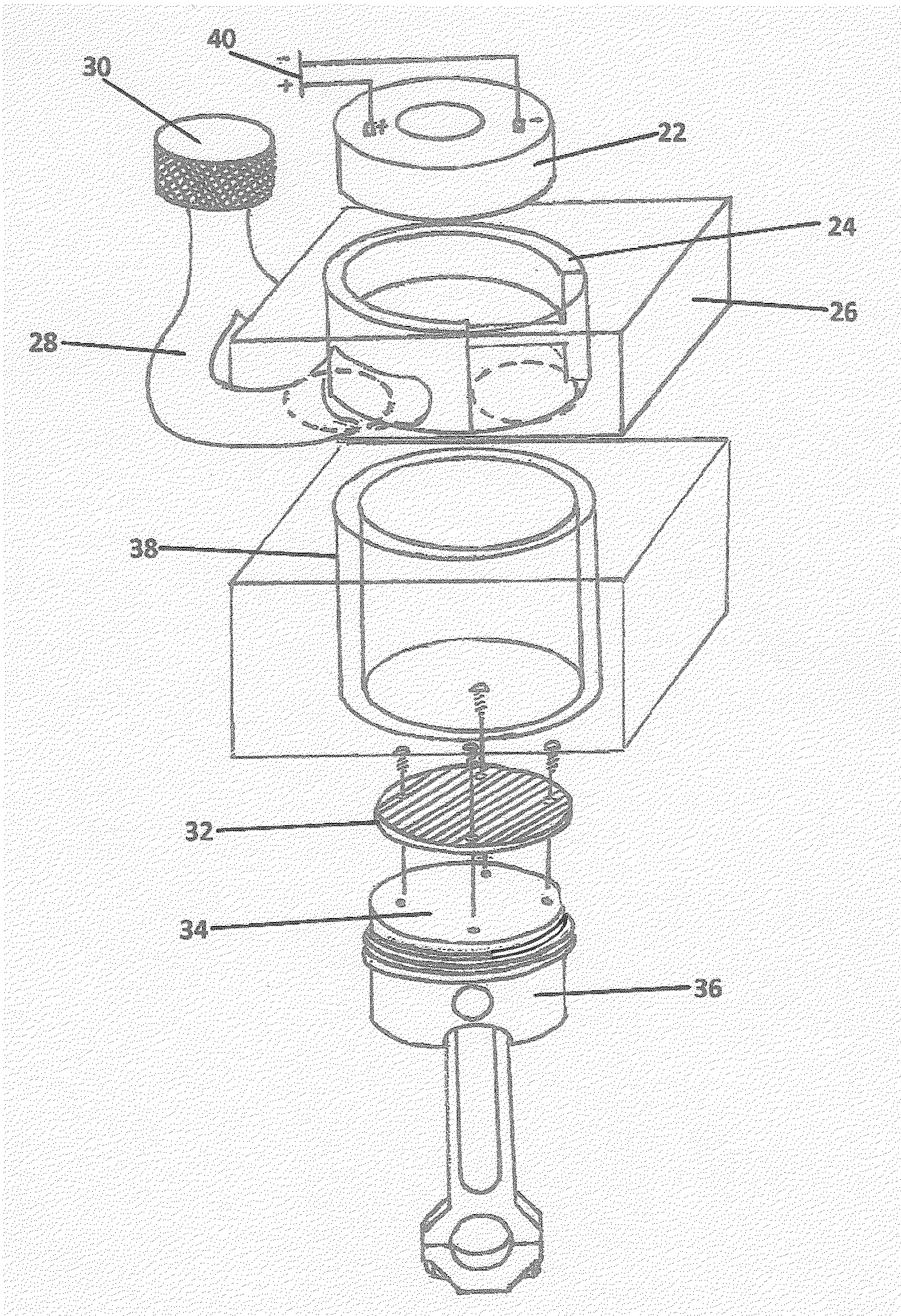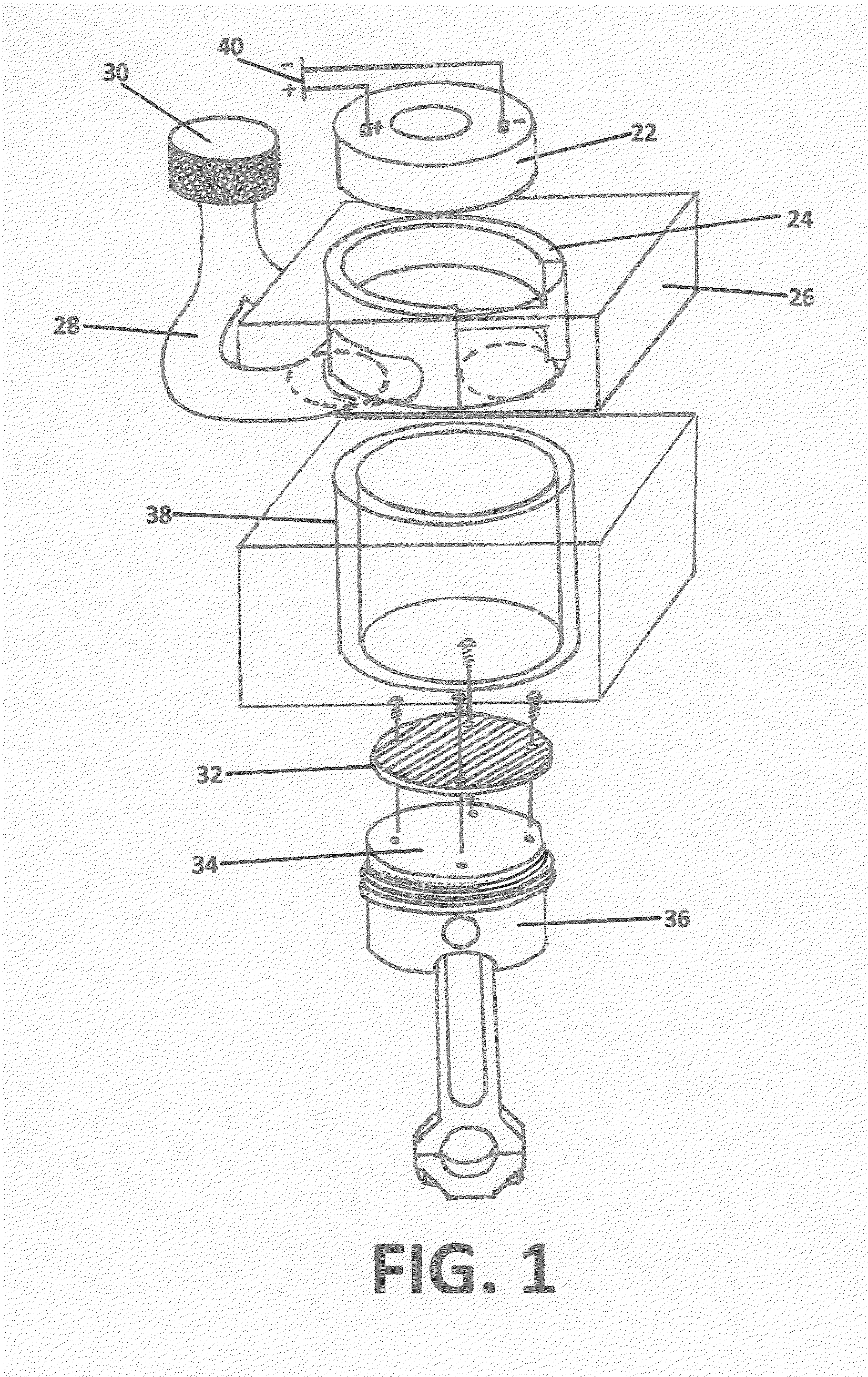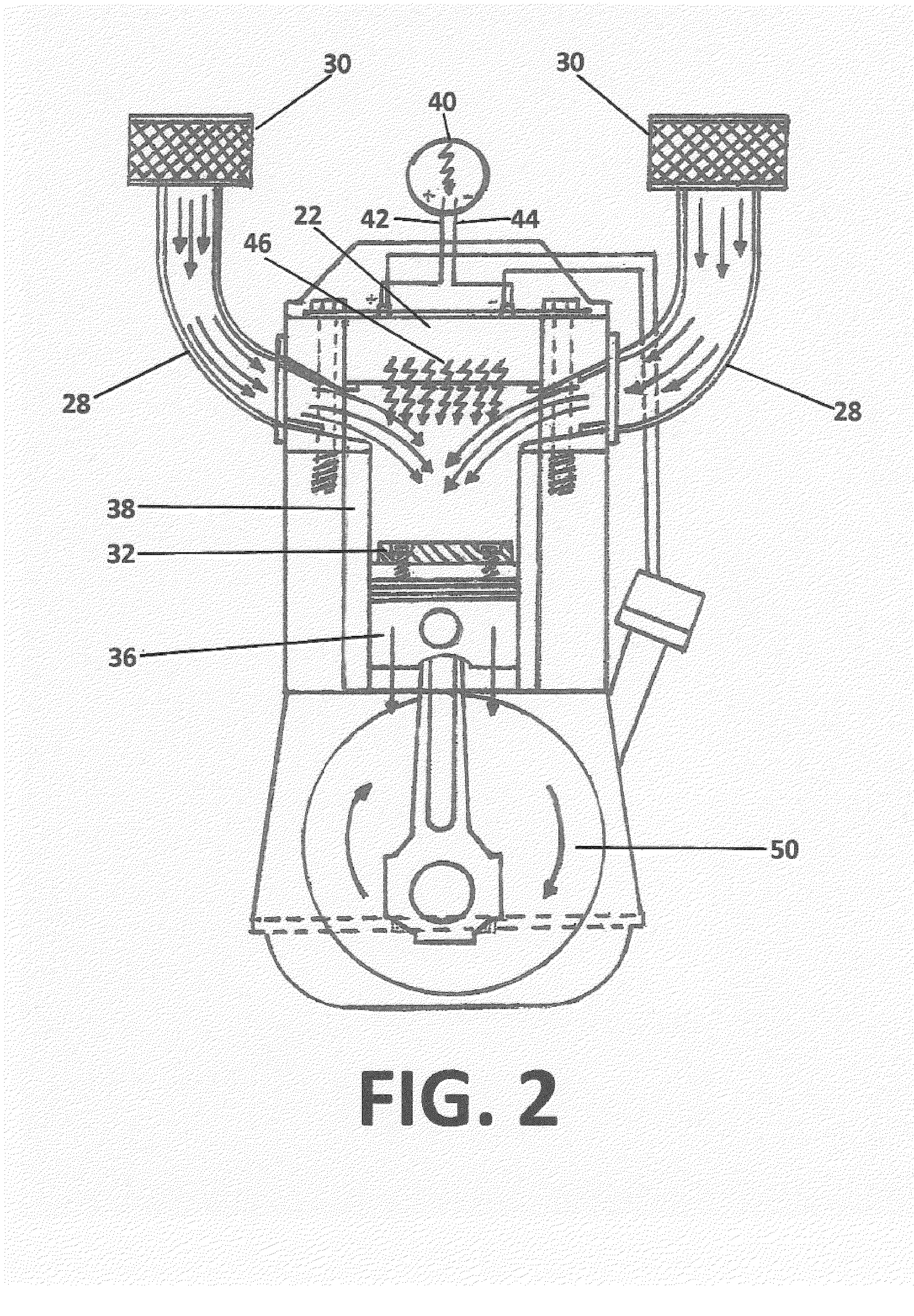Magnetically Propelled Engine That Does Not Require Fuel
a technology fuel, applied in the field of magnetically propelled engines, can solve the problems of reducing the size of the outward electromagnet, the very inefficient of the engine, and the inefficient engine, and achieve the effect of reducing or blocking the magnetic field
- Summary
- Abstract
- Description
- Claims
- Application Information
AI Technical Summary
Benefits of technology
Problems solved by technology
Method used
Image
Examples
Embodiment Construction
[0039]Referring now to the drawings in full detail, and in particular to FIGS. 1, 4 and 7, which show a view of all the main magnetically controlled propelled engine parts, showing a full 3 dimensional view of the parts, in an exploded view. The main electro magnet(s) 22 is encased in a magnetic reducing, or blocking material 24 in the cylinder head 26 with the intake / exhaust manifold 28 and intake / exhaust filter 30. The repulsive attractive rare earth magnet Neodymium 32 is used for the engine in this application for it lower working operation temperature and attached with high strength glue, adhesive, screw(s), bolt(s) or any combination of them, to the surface of the piston 34. The piston 36 moves by the electro magnet(s) 22 repulsion and attraction of the rare earth magnet 32 and piston 36 upward and downward, inside the cylinder 38. The movements of these parts are accomplished by applying positive and negative electrical power 40 to the electro magnet(s) 22. The application of...
PUM
 Login to View More
Login to View More Abstract
Description
Claims
Application Information
 Login to View More
Login to View More - R&D
- Intellectual Property
- Life Sciences
- Materials
- Tech Scout
- Unparalleled Data Quality
- Higher Quality Content
- 60% Fewer Hallucinations
Browse by: Latest US Patents, China's latest patents, Technical Efficacy Thesaurus, Application Domain, Technology Topic, Popular Technical Reports.
© 2025 PatSnap. All rights reserved.Legal|Privacy policy|Modern Slavery Act Transparency Statement|Sitemap|About US| Contact US: help@patsnap.com



